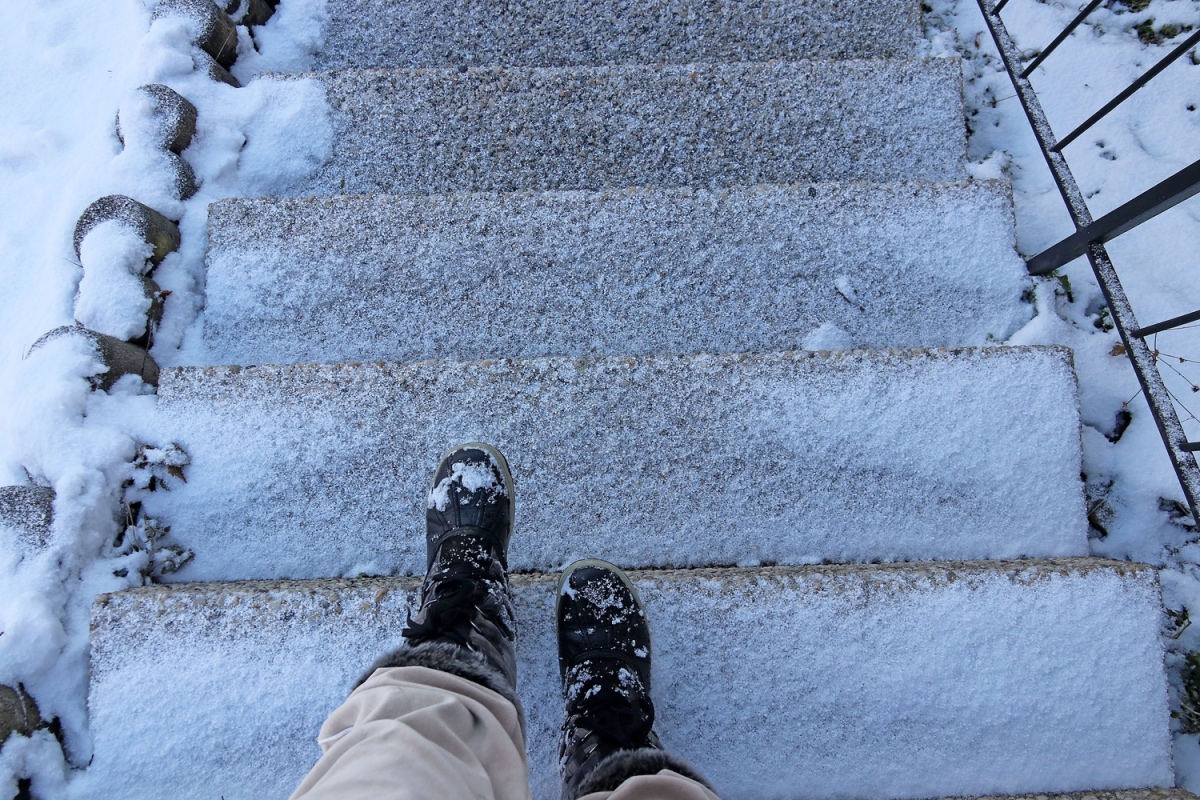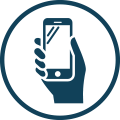In Las Vegas, slip and fall accidents are a common occurrence in various settings, from public spaces like malls and sidewalks to private properties such as homes and workplaces. Similarly, trip and fall incidents can happen unexpectedly, causing injuries ranging from minor bruises to severe fractures.
Table Of Contents
- Setting the State
- Causes and Scenarios
- Legal Implications and Liability
- Injury Types and Severity
- Documenting and Reporting Incidents
- Seeking Help With Nwogbe Law Group
Setting the Stage
Slip and fall accidents and trip and fall incidents are often used interchangeably, but they entail distinct circumstances and legal considerations. By clarifying these differences, individuals can better comprehend their rights and pursue appropriate legal actions if necessary.
For personal injury lawyers in Las Vegas, distinguishing between slip and fall and trip and fall accidents is essential for building strong cases and securing fair compensation for clients. Each type of incident requires unique evidence collection and legal arguments to establish liability.
Before delving into the nuances, let’s establish a foundational understanding of what constitutes slip and fall versus trip and fall accidents. Slip and fall incidents typically involve a person losing traction and falling due to slippery surfaces, whereas trip and fall accidents occur when someone’s foot strikes an obstacle, causing them to stumble and fall.
Causes and Scenarios
Slip and Fall Incidents
1. Wet Surfaces
Slippery floors resulting from spills, leaks, or inadequate cleaning pose significant hazards in various settings, including supermarkets, restaurants, and office buildings.
2. Uneven Floors
Irregular or poorly maintained flooring, such as cracked tiles or loose floorboards, can contribute to slip and fall accidents, especially in older buildings or outdoor areas.
3. Lack of Warning Signs
Failure to place warning signs or barriers around wet or freshly cleaned areas increases the risk of slip and fall incidents and may indicate negligence on the part of property owners.
4. Examples of Slip and Fall Situations
- A puddle of water in a grocery store aisle
- A freshly mopped floor in a restaurant without warning signs
- Icy sidewalks during winter without salt or warning cones
Trip and Fall Incidents
1. Obstructed Pathways
Objects or obstacles obstructing walkways, such as misplaced furniture, debris, or unsecured cables, can lead to trip and fall accidents, particularly in crowded or cluttered environments.
2. Loose Flooring or Carpeting
Unsecured rugs, torn carpets, or loose floor tiles create tripping hazards, especially in high-traffic areas like hotels, shopping centers, and public transportation facilities.
3. Poor Lighting
Inadequate illumination in stairwells, hallways, or parking lots reduces visibility and increases the likelihood of trip and fall incidents, particularly during nighttime or dimly lit conditions.
4. Examples of Trip and Fall Situations
- Loose carpeting in a hotel lobby
- Unsecured cables in an office space
- Uneven pavement on a poorly maintained sidewalk
Legal Implications and Liability
Liability in Slip and Fall Cases
1. Property Owner’s Responsibility
Property owners have a duty to maintain safe premises and address potential hazards to prevent slip and fall accidents. Failure to fulfill this obligation may result in legal liability for injuries sustained on their property.
2. Comparative Negligence
In some slip and fall cases, the injured party’s own negligence may contribute to the accident. States with comparative negligence laws allow for proportionate fault determination, potentially reducing the plaintiff’s recoverable damages based on their degree of responsibility.
3. Establishing Liability
To hold a property owner liable for a slip and fall incident, the injured party must demonstrate that the owner knew or should have known about the hazardous condition and failed to take reasonable steps to address it.
4. Case Examples
- A slip and fall in a shopping mall due to a spilled drink with no cleanup efforts
- Slipping on a wet floor in a restaurant with no caution signs
Liability in Trip and Fall Cases
1. Property Maintenance
Similar to slip and fall cases, property owners are responsible for maintaining safe conditions to prevent trip and fall accidents. Neglecting necessary repairs or maintenance tasks may lead to liability for resulting injuries.
2. Negligence of Property Owner
Property owners may be held accountable for trip and fall accidents caused by hazards that they knew or should have known about but failed to address in a timely manner.
3. Legal Precedents
Court rulings and legal precedents play a crucial role in determining liability and establishing standards of care in trip and fall cases, shaping future legal outcomes and settlements.
4. Case Examples
- Tripping over an unsecured rug in a retail store
- Falling due to inadequate lighting in a parking lot
Injury Types and Severity
Common Injuries in Slip and Fall Accidents
1. Sprains and Strains
Sudden slips or falls can result in overextended ligaments, tendons, or muscles, causing sprains and strains that may require medical treatment and rehabilitation.
2. Fractures
The impact of a fall can lead to bone fractures, ranging from minor hairline cracks to more severe breaks requiring surgical intervention and prolonged recovery periods.
3. Head Injuries
Slip and fall accidents pose a significant risk of head trauma, including concussions, skull fractures, and traumatic brain injuries, which may have long-term cognitive and neurological effects.
4. Long-term Effects
In addition to immediate injuries, slip and fall accidents can result in chronic pain, decreased mobility, and diminished quality of life, necessitating ongoing medical care and support.
Common Injuries in Trip and Fall Accidents
1. Broken Bones
Tripping over obstacles or uneven surfaces can cause individuals to land forcefully, leading to fractures in the arms, wrists, hips, or ankles, requiring medical attention and possible surgical intervention.
2. Cuts and Bruises
Sharp edges or abrasive surfaces encountered during a trip and fall accident may cause lacerations, contusions, or abrasions, resulting in pain, bleeding, and potential infection risks.
3. Spinal Cord Injuries
Severe trip and fall incidents can cause damage to the spinal cord, resulting in paralysis, loss of sensation, or impaired motor function, necessitating comprehensive medical treatment and rehabilitative therapy.
4. Psychological Impact
In addition to physical injuries, trip and fall accidents can have psychological repercussions, such as fear of falling again, anxiety in similar environments, or post-traumatic stress disorder (PTSD), requiring mental health support and counseling.
Documenting and Reporting Incidents
Medical Records
Seeking prompt medical attention and documenting all injuries, treatments, and associated expenses is crucial for establishing the extent of damages in a slip and fall or trip and fall case.
Witness Statements
Obtaining statements from witnesses who observed the accident or its aftermath can provide valuable corroborative evidence to support the injured party’s version of events.
Photographs and Videos
Capturing photographs or videos of the accident scene, including hazardous conditions, injuries, and relevant surroundings, serves as visual documentation to strengthen the legal claim.
Contacting Authorities
Reporting the incident to property owners, managers, or relevant authorities and obtaining incident reports can help preserve evidence and establish a formal record of the accident.
Notifying Property Owner
Informing the property owner or responsible party about the accident promptly allows them to take corrective measures and facilitates the investigation process.
Filing Incident Reports
Completing official incident reports with relevant details, such as date, time, location, witnesses, and injuries sustained, creates an official record of the incident for legal purposes.
Seeking Help With Nwogbe Law Group
Slip and fall accidents and trip and fall incidents present distinct challenges and legal considerations, requiring careful analysis and strategic advocacy to achieve favorable outcomes for injured parties.
Consulting with a knowledgeable personal injury lawyer in Las Vegas ensures that the injured party understands their rights, legal options, and potential avenues for pursuing compensation.
Our team at Nwogbe Law Group understands the complexities of slip and fall and trip and fall cases and is committed to providing exceptional legal representation to our clients. If you or a loved one has been injured in a slip and fall or trip and fall accident, don’t hesitate to reach out to us for expert guidance and support. We will advocate tirelessly on your behalf to ensure your rights are protected and that you receive fair compensation for your injuries.
Contact us today by filling out our form here or giving us a call at 702.508.7243!




